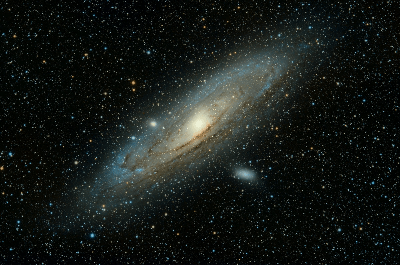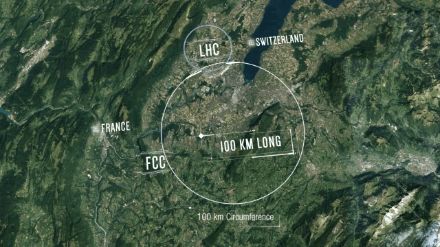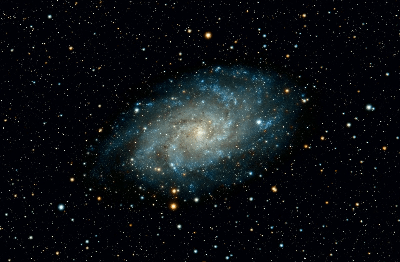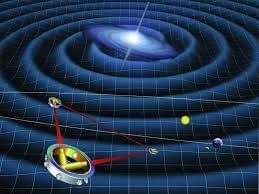The Future of Particle Physics
Towards Space: Will Elon Musk Save Physics?

The end of predictivity
Particle Physics has a reputation for being mathematically challenging. It is so for a good reason: it is our foremost frontier of understanding Nature at its most fundamental level.
This quest has cultivated over the last century, from 1905 - the Einstein’s papers[1] that introduced special relativity, to 2012 - the discovery of the Higgs boson at the Large Hadron Collider (LHC). This discovery verified the last piece of the Standard Model, our theory of almost everything.
The Standard Model is our most successful mathematical model so far. Typically, shorter length scales require more sophisticated models. For a millennia, our understanding of the world stood still, as human interactions spanned no more than six orders of magnitude. As humans conquer the Earth, our quest for survival transforms into a quest for knowledge.

This quest extends to both ends: subatomic, and inter-galactic. The Standard Model, however, is too good for our own good: its validity is predicted to span 62 orders of magnitude, from the quantum gravity scale (10−35 m), to the size of the observable Universe (1027 m).
But our quest is far from over. There are still unanswered questions: dark matter, dark energy, neutrino masses, unification of fundamental forces, … and most importantly, a theory of everything - the Holy Grail of Physics.

Furthermore, no matter how beautiful and elegant a theory is, it needs to survive the ultimate test: experiments. The Standard Model has been tested on 42 orders of magnitude. The lowest scale that we have reached so far is 10−20 m. This is 15 orders of magnitude greater than the quantum gravity scale, where it is supposed to still hold up to. What happens in between these two scales? And what happens beyond?
Smashing bricks
To study the subatomic structure, physicists employ the most obvious strategy: just smash particles and study what comes out. The more powerful the impact, the smaller the constituents that we can study.
Our most powerful particle collider is the LHC, a 27 km radius particle accelerator located beneath the France-Switzerland border and cost 6 billion dollars. In the collider, protons are accelerated to 13 TeV[2] , so energetic that it requires superconducting magnets to bend them on their paths.
To gain even higher energy, we can make the magnet stronger, or increase the radius of the collider. There are currently multiple proposals of future colliders. The most promising choice, the Future Circular Collider (FCC), with a radius of 100 km and energy of 100 TeV, will take 30 years to build. To explore quantum gravity, we need to get to the Planck energy, 1016 TeV. Needless to say, we will need bigger colliders, and new ideas to push the limit of our understanding.
One idea is building a collider orbiting the Earth, the Fermitron, which will generate a energy of 20,000 TeV, still nowhere near the quantum gravity scale. It is clear that at some points, the Earth won’t be large enough, and we will need to go to space. A collider with the Moon orbit will generate another 70 times the energy.
To probe the unification of forces, one will need one at least the size of the solar system[3] . Such a device can only be powered through a Dyson sphere, built by a much more advanced civilization. Though this is only hypothetical, going to space is necessary for Particle Physics to move forward.

Space is more natural to build particle colliders for multiple reasons. To obtain a high magnetic field, current technology requires using superconductive magnets, which require extremely low temperature. The interior of the colliders also need to be extremely sterile. There have been proposals to put the next collider on the Moon because it offers the perfect environment. However before moving to space, there is a natural alternative of particle colliders.

Natural colliders
Before we know how to smack bricks, there is already a natural particle producer: space. Accelerating a particle requires a strong electromagnetic field and extremely sterile environment. This is natural in space: particles can travel a very, very long time without any head-on collision. By the time they get to Earth, these cosmic particles have gathered so much energy, far beyond anything that we can ever hope to achieve.
The most energetic particle recorded, the Oh-My-God particle, is at 108 TeV. Cosmic particles started observational particle physics. However, as energy gets higher, the events become increasingly rare. A cosmic ray at the LHC energy scale appears in average one hour per a square meter. The LHC alone produces 600 million collisions per second.
However, by moving onto space, one can significantly increase the exposure. Currently, NASA has multiple projects to collect cosmic rays in the outer atmosphere and on space stations. Given high enough intensity, and luck, this will provide a wonderful alternative option to relying on our own particle colliders.
Cosmic rays are, unfortunately, responsible for the cosmic radiation problem, which is a significant hurdle for space travelling. On Earth, the atmosphere and the Earth magnetic field shields us from all harmful radiations. In space, the average radiation is at 50 to 500 mSv[4] per year. For comparison, the typical dosage recorded in those Chernobyl workers who died within a month is about 6,000 mSv.
So the average radiation in space is acceptable for quick travels, but say, if Elon Musk wants to send people to live on Mars, he will need to overcome the space radiation problem. Needless to say, any project we want to build in space, including particle colliders, will suffer from the same problem. So while cosmic particles present an attractive alternative option to building larger colliders, they also present a fundamental problem.

Cosmic Rays illustration, Simon Swordy (U. Chicago), NASA
Smashing black holes
The other frontier of Particle Physics is cosmology: the evolution of the Universe. Right after Big Bang, the Universe starts out from very small size and extremely thick density, swarming with elementary particles. In this extreme, the two fundamental limits of very large and very small scales coincide. Objects that manifest both those limits are black holes: extremely heavy, but extremely focused.
What happens when two of these things collider? It turns out that their collisions are so violent and extreme that they create ripples in the space-time continuum, called gravitational waves. These waves pass through everything, collecting information, and finally come to us. The 2017 Nobel prize in Physics was awarded to our first effort to measure these ripples with the LIGO collaboration.
LIGO acts as a big window made up of lasers. When a gravity wave passes through the window, it changes the physical distances between the detectors. With enough sensitivity, these changes can be detected and the gravity waves can be reconstructed. In Feb. 2016, the LIGO collaboration announced their first detection of two black holes, 29 and 26 times more massive than the Sun, that collided 1.3 billion years ago.
How does one improve the accuracy and intensity of gravitational waves detection? By using a bigger window, and, you guess it, putting it in space.
NASA's joint effort with the European Space Agency (ESA) will lift the Laser Interferometer Space Antenna, LISA, in space in 2034 . LISA, the next generation of LIGO, will have an arm 2.5 million km length, compared to the 3,000 km distance between the two LIGO antennas. This presents us with a novel way to peek into the Universe.

NASA illustration of LISA
Summary
Particle Physics aims to push our understanding of both the smallest and largest scale. The smallest scale is studied via observing subatomic particles with the help of particle colliders and cosmic rays. The largest scale is studied through observational cosmology and gravitational waves.
In the past century, theorists have done a good job of constructing the Standard Model, our best theory of Nature to date. Now for theory to proceed and experiments to catch up, we will need more room. Space is not only the final frontier of human lives, but is also the key to unlock the final frontier of human intellect.
But it does not mean that we are at a complete stand still. In the meantime, there are still the precision and the luminosity frontier, as well as the advance of simulation. These frontiers are possible because of recent development in both hardware (computational power) and software (big data and machine learning). These topics are interesting on their own rights, and will be left for another discussion.
Written by Minh Nguyen
Edited by Alexander Fleiss, Dima Korolev, Michael Ding & Jack Argiro
Legendary NASA Astronaut Tom Jones on Asteroids, Challenger, Mercury & Columbia
String Theory & Cosmology with Brown University Physics Professor Dr. Stephon Alexander
Dreaming of the Stars: An Interview with Rocket Scientist Dr. Anita Sengupta
James Webb Space Telescope Will Answer Some Of The Universe's Questions
Black Holes: Gateway to Another Dimension, or Ghosts of Stars’ Pasts?
Will Trump Rock NASA & The Russian Space Agency's Partnership?
Footnotes:
[1] https://en.wikisource.org/wiki/On_the_Electrodynamics_of_Moving_Bodies_(1920_edition)
[2] 1 TeV = 1012 eV, energy unit used by particle physicists. 1 eV is the energy of an electron accelerated in a voltage of 1 Volt.
[3] Realistically the collider will have to be much bigger because of synchrotron radiation: particles lose energy when travelling in circles.
[4] mSv stands for milli-Sievert, a radiation measurement. A full body scan is equivalent to about 10 mSv.